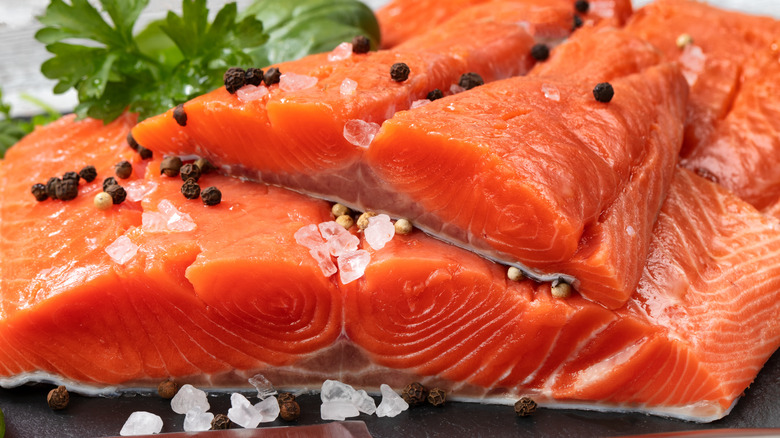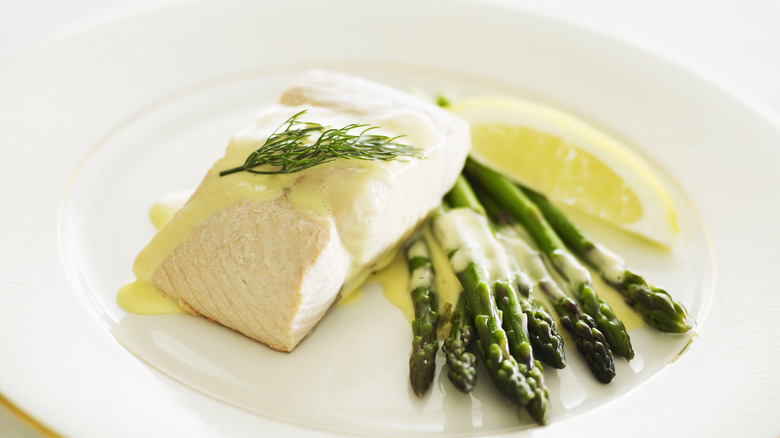The Reason King Salmon Is So Expensive
Also called Chinook salmon, king salmon lives up to its moniker by being one of the most sought-after fish in the world. While the fish has an extensive habitat stretching from Monterey Bay in California to Chukchi Sea in Alaska, king salmon are rare in contrast to other types like pink, coho, and sockeye. In 2019, only 9.9 million pounds of king salmon were caught in the U.S., compared to 290 million pounds of sockeye salmon, according to NOAA Fisheries. Likewise, in 2013, king salmon represented only 1% of the roughly 273 million salmon caught in Alaska, according to the Alaska Department of Fish and Game.
This rarity of king salmon drives its high price, but that isn't the only factor. King salmon are also highly prized for having the highest amount of omega-3 fatty acids. Moreover, unlike the pink flesh most associated with salmon, king salmon have vivid red flesh and a rich buttery taste.
Every May, when king salmon begin returning to rivers across Alaska — including the renowned Copper River – headlines are made as the first few fish are caught. These early catches are typically the most expensive: In 2017, Copper River king salmon sold for $75 per pound at the start of the fishing season, according to Anchorage Daily News. However, like the most expensive cheese in the world, you can expect to pay a premium for king salmon all year round, with Pike Place Market in Seattle selling a whole 20-pound fish for a whopping $650 and steaks for $39.50 per pound at the time of this writing.
White king salmon offers a different taste but is harder to find
In a world filled with great inexpensive fish, the king salmon stands out as a meal fit for royalty. However, this red-fleshed fish also comes in a white variety that is even more sought after. Known as white king salmon, these fish look the same on the outside, but display light ivory flesh when cut open.
This color is caused by a recessive gene that prevents the fish from metabolizing the pigments in their food, namely crustaceans, shrimp, and krill. While typical king salmon gain their coloration from pink and reddish prey, white salmon cannot. Most white king salmon are found in the Fraser River in British Columbia. While the Alaska Department of Fish and Game estimates that only 5% of king salmon carry this recessive gene, there are small rivers in the Fraser River watershed where nearly all the king salmon are white.
Along with their different appearance, white king salmon have a slightly different taste, described as being less meaty than other salmon, with a buttery sweetness incomparable to even their red-fleshed kin. Of course, you can expect to pay quite a bit for this extremely rare salmon, with Great Alaska Seafood selling eight to 10-pound whole fish for $259, and Alaska Gold Seafood selling 10 or so 5-pound portions for $255. Pike Place Market also sells this white king salmon, but it is often sold out due to the high demand and low availability.

